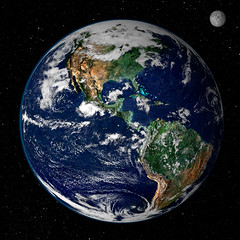 The Upper Atmosphere Research Satellite is expected to fall to Earth, and even scientists cannot predict exactly when, or where, it will land. What if the satellite falls on you, (or your home or vehicle)? There is an international treaty in place that would compensate you for damages and injuries.
The Upper Atmosphere Research Satellite is expected to fall to Earth, and even scientists cannot predict exactly when, or where, it will land. What if the satellite falls on you, (or your home or vehicle)? There is an international treaty in place that would compensate you for damages and injuries.
I don’t think that most people spend a lot of time thinking about the satellites that are just outside of the Earth’s atmosphere, forever circling. Usually, if you are wondering about what is going on with a satellite, it is because your television service isn’t working. Even then, you are more likely to be cursing the satellite, (or the service provider), rather than wondering if the satellite is going to crash down upon the Earth.
NASA’s UARS satellite was launched from the Space Shuttle in 1991. UARS stands for Upper Atmosphere Research Satellite. It was the first multi-instrumented satellite to observe chemical constituents in the atmosphere, for the purpose of allowing scientists to gain a better understanding of atmospheric photochemistry and transport.
Right now, the UARS satellite is expected to re-enter the Earth’s atmosphere, and basically come crashing down somewhere. Scientists cannot predict exactly when, or where, the satellite, (or the pieces of it), will land. There are at least 26 pieces of this satellite that scientists believe are big enough to survive re-entry. The biggest one weighs 330 pounds.
NASA says that there is a 1 in 3,200 risk that the debris from this satellite could injure someone. Any one individual person’s odds of being struck by pieces of this satellite are 1 in 21 trillion. In other words, it is going to land somewhere, but probably not on you.
But, what if it does? The short answer is that NASA would be responsible for paying compensation for any damages and injuries that occur as a result of having a satellite, (or any of its pieces), land on you, (or your property).
There is an international treaty that was signed in 1972 that deals with this potential liability issue. There was something called The 1972 Convention on International Liability for Damages Caused by Space Objects. The United States was part of this convention.
When the United States joined this convention, it agreed to be “absolutely liable to pay compensation for damage caused by its space object on the surface of the Earth or to aircraft in flight”. Therefore, any damages that are caused by the falling UARS satellite would be something determined in accordance with the terms set up in this treaty.
NASA stands for National Aeronautics and Space Administration, and it is a branch agency of the United States government. To make a complicated explanation much shorter, it is NASA that would be expected to pay for damages caused by one of their satellites when it crashed down, somewhere, on the Earth.
Image by NASA Goddard Photo and Video on Flickr

